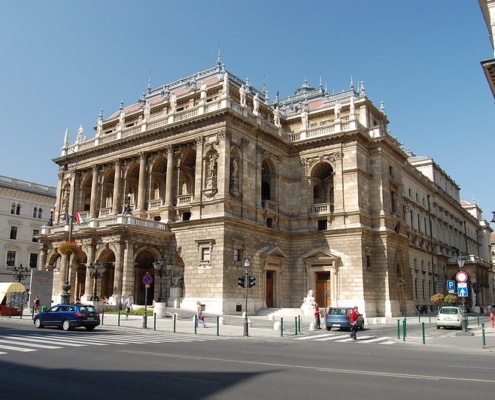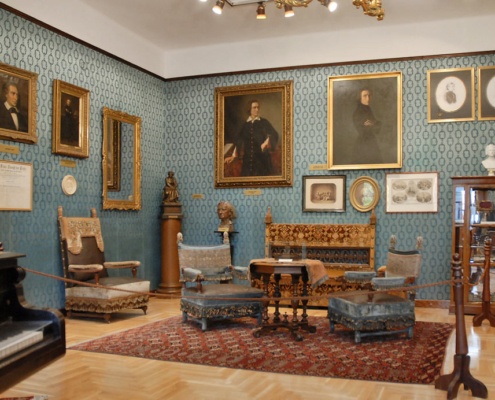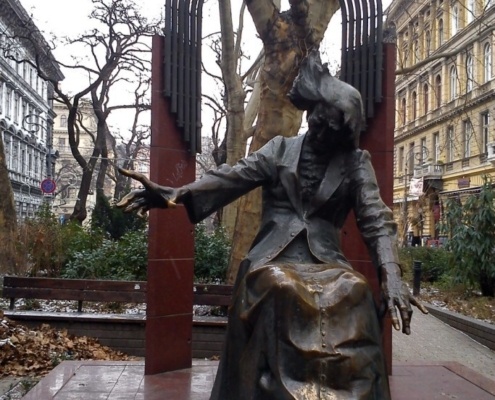Exploring the Melodic Magic of Franz Liszt in Budapest
Hungary has gifted the world with an array of musical geniuses, but few have left a mark as indelible as Franz Liszt. Despite being Hungarian by birth, Liszt’s first language was German, and he only learned Hungarian later in life. Nevertheless, he was intensely proud of his Hungarian heritage. Renowned as one of the greatest pianists of all time, Liszt’s compositions revolutionized piano technique. His Hungarian Rhapsodies and monumental piano sonatas are celebrated for their virtuosity and emotional depth. Perhaps his most famous piece, Hungarian Rhapsody No. 2, from a set of 19 Hungarian-themed rhapsodies, has even been immortalized in various cartoons, including Looney Tunes (performed by Bugs Bunny).
So, where can one discover memorials to Franz Liszt in Budapest?
Franz Liszt in Budapest Airport
Since 2011, the airport has been named after the maestro in commemoration of the 200th anniversary of Liszt Ferenc’s birth. The statue of Ferenc Liszt stands in front of Terminal 2A on a high pedestal. It depicts Liszt Ferenc sitting on his suitcase, reminiscent of his extensive European concert tours. The accompanying Kolodko artwork features a paper airplane folded from a sheet of music, symbolizing the eternity of music.

Hungarian Opera House
The Hungarian State Opera House, with its approximately 1300 seats, is a stunning sight both inside and out. The building on Andrássy Avenue shines in domestic neo-Renaissance splendor, though rich baroque elements can also be found in its lavish decorations. The statues of legendary composers such as Mozart, Beethoven, Tchaikovsky, Verdi, and Franz Liszt adorn the exterior, while inside, visitors are enchanted by the noble marble flooring of the foyer, the four colossal marble statues in the main staircase, the red-carpeted grand staircase, the gilded boxes, and the monumental dome fresco by Károly Lotz. Whichever way you look, you’re surrounded by elegant grandeur here, fitting for the esteemed venue hosting illustrious performances.
Liszt’s legacy is prominently displayed in the opera house, with a statue of the composer adorning one of the two large statues at the front of the building. Positioned on the right side of the main facade, the statue pays homage to Ferenc
Liszt’s influence on Hungarian music.

Liszt Ferenc Museum and Research Center (Museum of Franz Liszt in Budapest)
Nestled within the historic Old Academy of Music building at Vörösmarty utca 35 in Budapest (H-1064), the Liszt Ferenc Memorial Museum and Research Centre has been a beacon for music enthusiasts since its opening in September 1986. Once serving as the second site of the prestigious Academy of Music from late 1875 to mid-1907, this venerable edifice has witnessed the evolution of Hungarian musical education.
Following the grand inauguration of a new palace at Liszt Ferenc tér on May 12, 1907, the Vörösmarty utca building underwent a transformation, embracing a myriad of roles over the years. From a music school echoing with the melodies of budding talents to a cozy coffee shop where artists found solace in caffeine-fueled creativity, and even as a gathering place for political and social associations, the building’s walls reverberated with the echoes of Budapest’s vibrant cultural scene.
Today, despite its modest size, the Liszt Ferenc Memorial Museum and Research Centre stands as a testament to Liszt’s enduring legacy. Step inside, and you’ll discover a treasure trove of insights into Liszt’s life, inner circle, and personal possessions. Delve deeper, and you may even request to experience the very room where Liszt’s masterpieces were once brought to life in concert. Informative information boards adorn the stairway leading to the museum on the first floor, guiding visitors on a journey through Liszt’s remarkable musical odyssey.
Liszt Ferenc Academy of Music
The academy’s main facade features an unusually large seated statue of Liszt, dressed in clerical attire. This positioning is interpreted as a linking element between the two layers of meaning, reinforcing Liszt’s image as the earthly representative of the god of music. It’s a versatile institution that serves as an educational establishment, an international music conservatory, and a concert venue all in one.
They offer guaranteed tours for individual visitors in English. The tours include a 50-minute guided tour followed by a mini-concert performed by a student of the music academy.
Liszt Ferenc Statue at Liszt Ferenc Square
Adjacent to the Liszt Ferenc Academy of Music lies a small square where visitors can discover another statue of Franz Liszt. Take a moment to admire the powerful fingers that once graced the piano keys. Liszt’s intense performances often resulted in broken piano strings, a testament to his remarkable skill and the limitations of pianos in his era.
Additionally, while you’re in Budapest, don’t miss the opportunity to tantalize your taste buds with Liszt’s favorite dishes. Indulge in the sumptuous flavors of mushroom-stuffed chicken and turkey breast wrapped in almond crust and crowned with grated cheese. You can savor these culinary delights at some of the city’s high-end restaurants, where exquisite cuisine meets Budapest’s rich cultural heritage. As you explore Liszt’s musical legacy and indulge in Budapest’s culinary delights, remember that more adventures await just around the corner.
And while Liszt’s presence is undeniable, Budapest’s musical tapestry is rich with the threads of other Hungarian composers like Zoltán Kodály and Béla Bartók. In the near future, stay tuned to discover more about these musical luminaries and their traces in Budapest. From Kodály’s folk-inspired melodies to Bartók’s innovative compositions, each composer has left an indelible mark on Hungary’s cultural landscape.
Stay tuned! More melodic magic awaits.
Join our daily Free Budapest Tours and immerse yourself in the world of Hungarian musicians, as well as other cultural, historical, and architectural wonders.



